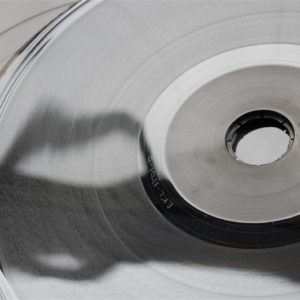EAC or Exact Audio Copy is a very handy tool for music fans. Every time I receive an order of new CDs, the very first thing I do is rip and burn two copies of every CD–one for the backup spool, and one for the binder that I bring out to gigs. Making backups and copies for playing out ensures that originals will stay in the very best condition. Additionally, as a DJ, it is a sensible precaution to avoid taking originals from your home. It is every DJ’s nightmare to have their record bag or CD wallet stolen, but nowadays, the risk can be minimized. This article compiles some tips and tricks I’ve picked up from using the software, which also has several uses beyond merely backing up your discs.
Note: this article is very old by now and might not be at all useful to anyone.
Track Naming
It is always helpful to have the software automatically fill in artist and track title details when you scan a disc. I recommend using freedb for this purpose. Configuring this is not difficult–simply open up the EAC menu, select freedb / Database Options, and enter the URL http://freedb.freedb.org:80/~cddb/cddb.cgi into the freedb server field if it isn’t already there. Brand new CDs will not likely have their info added, but you can always submit a disc.
Ripping CDs
If you’re ripping a new or unblemished CD, you can skip the testing process by striking [F5] to begin. If you have a dirty CD with scratches or a burn of unknown quality, use [F6] to test and then rip. The status report at the end of the ripping session will show you the quality and overall volume of individual tracks. If you are dealing with older CDs, you may encounter quiet tracks that could benefit from normalization. This can be accomplished after the rip by using the wave editor (CTRL-E). It is also quite possible to setup EAC so that MP3s are automatically encoded, preferably with LAME. See the links at the base of this article for more information.
Determining Audio Quality
Another handy trick this program is capable of is determining the quality of an audio file. Since it is an easy thing to decompress an MP3 file and pass it off as an original WAV, it is prudent to look for signs of compression in any file you receive through the net or by way of snail mail. Rip from CD as necessary, and open up EAC. There is an option under Tools entitled Process Wave, with the shortcut CTRL-E. Load up your file and select Spectral View from the Display menu. An original wave file is going to have colour going all the way to the top. A decompressed MP3 will have a black gap in the higher frequency range, as the compression engine cuts out the majority of frequencies above a certain range.
That’s all for now, but if I find any other useful tips for EAC that are worth mentioning, I’ll be sure to update this article.







